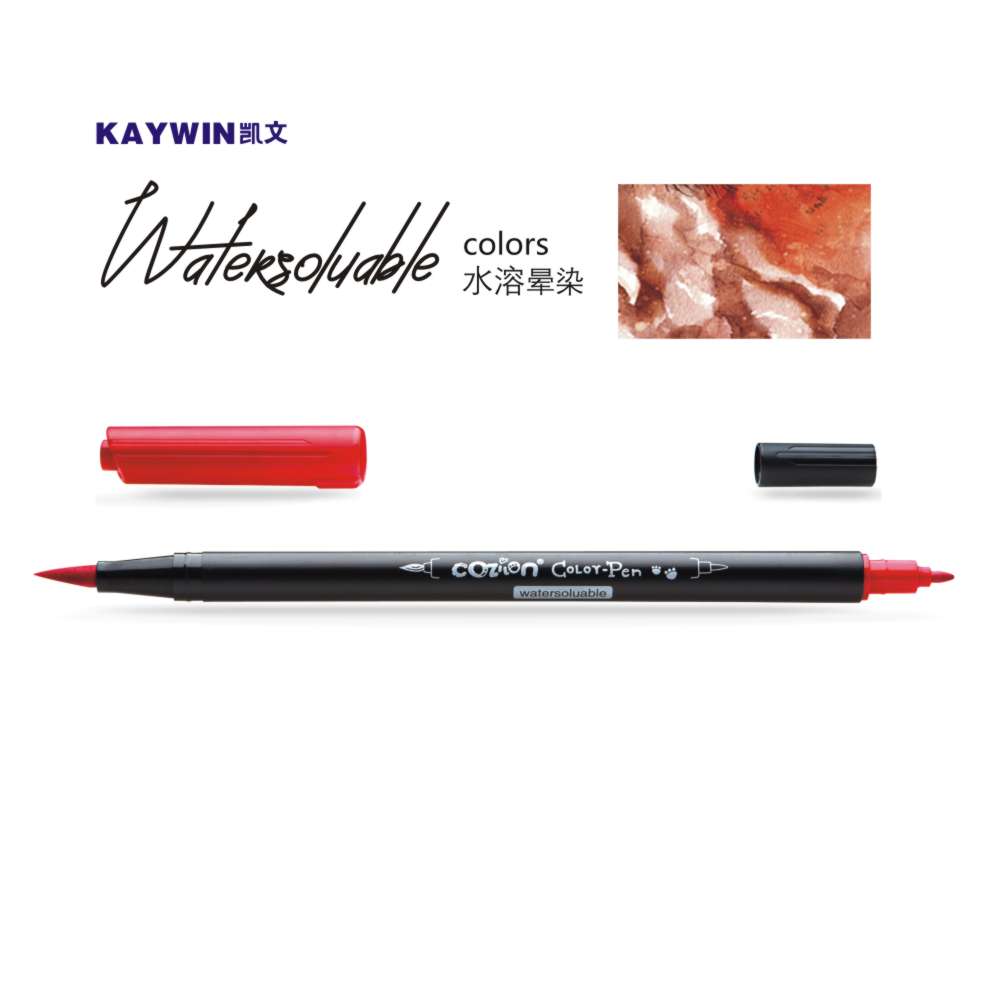Alcohol-Based vs Water-Soluble Markers: Which is Better?
Alcohol-based markers provide long-lasting, vivid colors, while water-soluble markers are known for their transparent, light texture and washability.
When choosing between the two markers, be sure to go through the different aspects that can affect your desired artistic effects and overall purpose of use.
If you want to learn about the nitty-gritty of these markers, this blog explores the differences between alcohol-based and water-soluble marking pens to help you decide which is better for your needs.
What are water-soluble markers?
A water-soluble marker is an art tool that is composed of a water-based solvent and dye.
These markers are known for producing watercolor effects on artworks and their ease of blending with other colors.
Water-soluble marking pens also work efficiently for quilting and embroidery.
Handcrafters use water-soluble fabric markers to draw temporary drawing or cutting patterns that can be washed off with water.
Furthermore, water-based markers are known to be children-safe, non-toxic, and environment-friendly.
Interesting Read: How Do You Know If A Marker Is Water-Soluble?
What are alcohol-based markers?
Alcohol-based markers are art pens that primarily contain alcohol as the ink solvent and some color pigments.
Unlike water-based markers, alcohol-based markers dry quickly and give off more vivid colors.
These markers are also used on various surfaces, such as glass, plastic, paper, and wood.
Once you use an alcohol-based marker on any of these surfaces, the marks are permanent and can be difficult to remove.
These markers are typically smudge-free; thus, suitable for long-lasting art projects.
Alcohol-Based Markers vs. Water-Soluble Markers: What’s the Difference?
Understanding the difference between alcohol-based and water-soluble markers needs clarification on various aspects, such as the following:
| Characteristics | Alcohol-Based Markers | Water-Soluble Markers |
| Composition | Alcohol-based solvent | Water-based solvent |
| Blendability | Easy | Blends easily when dry |
| Drying Time | Quick | Slow |
| Permanence | High | Low |
| Archival Quality | High; vivid colors | Low; watercolor effects |
| Effects on paper | Can bleed through | Can cause paper to warp |
| Can be reactivated? | No | Yes |
| Waterproof | Yes | No |
| Surface Compatibility | Wide range of surfaces like plastic, glass, paper, etc. | Best for fabric and paper |
Alcohol-Based Markers vs. Water-Soluble Markers: Application and Their Artistic Effects
Because of their water-based content, water-soluble markers produce lighter, transparent, watercolor-like effects on paper.
These markers can be easily washed off with water, which is why sewers and handcrafters use them in quilting and embroidery.
On the other hand, alcohol-based markers are used by a lot of professional artists for their versatility and long-lasting archival quality.
These markers are intended for paintings and detailed illustrations because of their vivid color and texture.
To sum it all up, choosing between alcohol-based markers and water-soluble markers depends on how and where you will use them.


